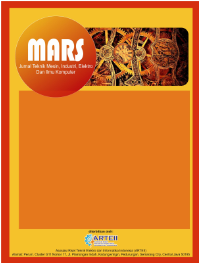Application of Neural Networks in Prediction of Software Effort
DOI:
https://doi.org/10.61132/mars.v3i1.666Keywords:
ANN, Machine Learning, NASA, Software EffortAbstract
Estimating the effort, time, and cost needed to build a software project is an important task in software engineering. Estimating software prior to development can help to reduce risk and improve the project success rate. Researchers have developed numerous traditional and machine learning models to estimate software effort, but it has always been difficult to estimate effort precisely. This paper presents a predictive model based on artificial neural networks namely ANNs to predict the software effort. The NASA dataset is applied to construct the proposed model. The system was trained using 50 data points, and the remaining 10 were used for testing. It was concluded that the ANN approach could estimate the software effort with high accuracy. A comparative study with other published equations was also performed, and it was found that ANN had less error and produced better results than other existing methods.
References
Aggarwal, K., Singh, Y., Chandra, P., & Puri, M. (2005). Evaluation of various training algorithms in a neural network model for software engineering applications. ACM SIGSOFT Software Engineering Notes, 30(4), 1–4.
Bhatnagar, R., Bhattacharjee, V., & Ghose, M. K. (2010). Software development effort estimation–neural network vs. regression modeling approach. International Journal of Engineering Science and Technology, 2(7), 2950–2956.
Haykin, S. (1999). Neural Networks: A Comprehensive Foundation. Upper Saddle River, NJ: Prentice Hall.
Jeon, J., & Rahman, M. S. (2008). Fuzzy neural network models for geotechnical problems.
Kaur, J., Singh, S., Kahlon, K. S., & Bassi, P. (2010). Neural network—a novel technique for software effort estimation. International Journal of Computer Theory and Engineering, 2(1), 17.
Kumar, K. V., Ravi, V., Carr, M., & Kiran, N. R. (2008). Software development cost estimation using wavelet neural networks. Journal of Systems and Software, 81(11), 1853–1867.
Mair, C., et al. (2000). An investigation of machine learning-based prediction systems. Journal of Systems and Software, 53(1), 23–29.
MathWorks. (2009). Neural network toolbox user’s guide: For use with MATLAB.
Mohsin, Z. R. (2021). Application of artificial neural networks in prediction of software development effort. Turkish Journal of Computer and Mathematics Education (TURCOMAT, 12(14), 4186–4202.
Mohsin, Z. R. (2021). Comparative study for software effort estimation by soft computing models. Journal of Education for Pure Science-University of Thi-Qar, 11(2), 108–120.
Mohsin, Z. R. (2021). Investigating the use of an adaptive neuro-fuzzy inference system in software development effort estimation. Iraqi Journal for Computer Science and Mathematics, 2(2), 18–24.
Nassif, A. B., Azzeh, M., Capretz, L. F., & Ho, D. (2016). Neural network models for software development effort estimation: A comparative study. Neural Computing and Applications, 27(8), 2369–2381.
Rafiq, M., Bugmann, G., & Easterbrook, D. (2001). Neural network design for engineering applications. Computers & Structures, 79(17), 1541–1552.
Rijwani, P., & Jain, S. (2016). Enhanced software effort estimation using multi-layered feed-forward artificial neural network technique. Procedia Computer Science, 89, 307–312.
Singal, P., Kumari, A. C., & Sharma, P. (2020). Estimation of software development effort: A Differential Evolution Approach. Procedia Computer Science, 167, 2643–2652.
Tanarslan, H., Secer, M., & Kumanlioglu, A. (2012). An approach for estimating the capacity of RC beams strengthened in shear with FRP reinforcements using artificial neural networks. Construction and Building Materials, 30, 556–568.
Wittig, G. E., & Finnie, G. R. (1994). Using artificial neural networks and function points to estimate 4GL software development effort. Australasian Journal of Information Systems, 1(2).
Downloads
Published
How to Cite
Issue
Section
License
Copyright (c) 2025 Mars : Jurnal Teknik Mesin, Industri, Elektro Dan Ilmu Komputer

This work is licensed under a Creative Commons Attribution-ShareAlike 4.0 International License.





